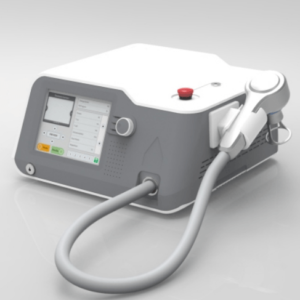Percutaneous Laser Disc Decompression (PLDD)
Percutaneous laser Disc decompression PLDD is a minimally invasive procedure used to treat compressed nerve roots caused by a herniated disc condition.
Percutaneous Laser Disc Decompression (PLDD) in which the Intervertebral Discs’ intradiscal pressure in reduced through laser therapy.
It consists of the insertion of a needle into the Nucleus Pulposus. Vaporizing nucleus which results in a sharp fall of intradiscal pressure.
Laser emits its energy, with different wavelengths, to help reduce intradiscal pressure. Once the pressure is reduced, the herniation will start to move away from the nerve root.
According to Dr. Choy in his article Twelve Years’ Experience with 752 Procedures in 518 Patients, “PLDD has proven to be safe and effective. It is minimally invasive, is performed in an outpatient setting, requires no general anesthesia, results in no scarring or spinal instability, reduces rehabilitation time, is repeatable, and does not preclude open surgery should that become necessary.”
SIFLASER products are the ultimate tool for PLDD.
SIFLASER therapeutic devices, particularly the SIFLASER 1.1, SIFLASER 3.3, SIFLASER 3.2, SIFLASER 2.1 and SIFLASER 1.2, have a wide range of wavelengths that varies between 455nm and 1470nm and a power range of 0.5W-60W, depending on the application of the product and adaptable to the needs of the surgeon.
This operation has proven safe and effective. It is minimally invasive, requires no general anesthesia, does not result in scarring or spinal instability, not to mention reducing the patient’s rehabilitation time.
References: Percutaneous laser disc decompression (PLDD): twelve years’ experience with 752 procedures in 518 patients, Effects of Percutaneous Laser Disc Decompression (PLDD) on Clinical Outcome of Teared Vs Intact Protruded Intervertebral Discs: A Prospective Cohort Study.
[launchpad_feedback]



